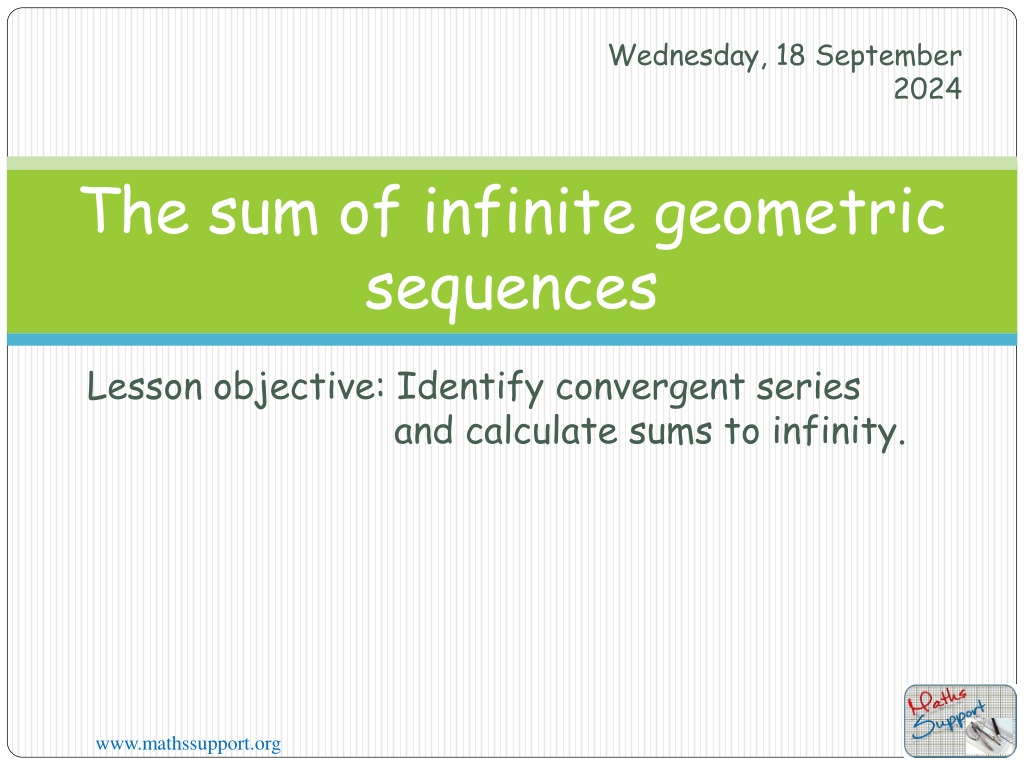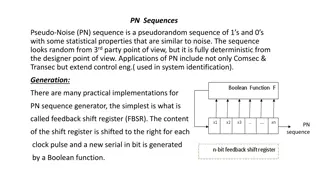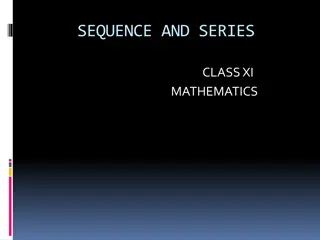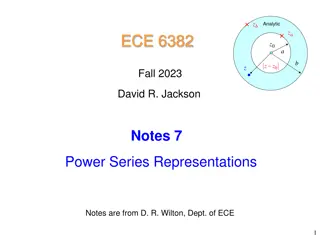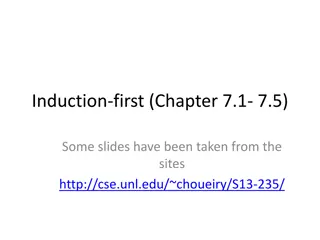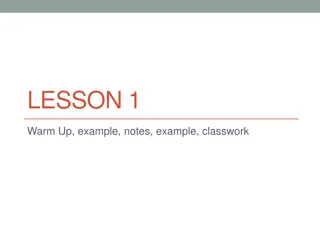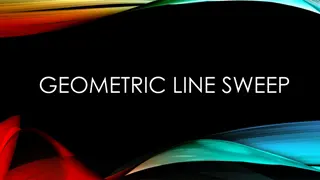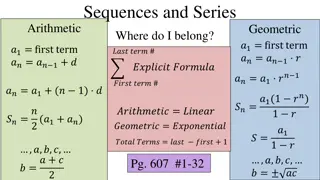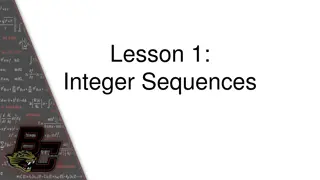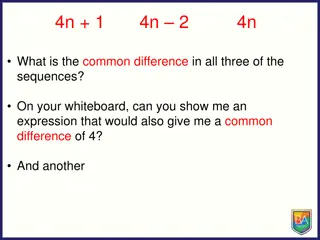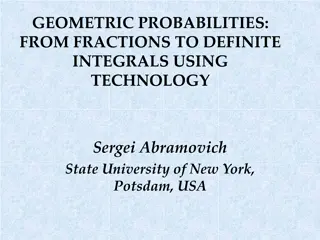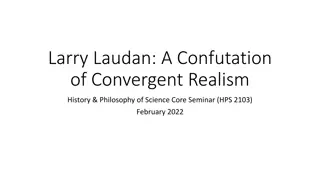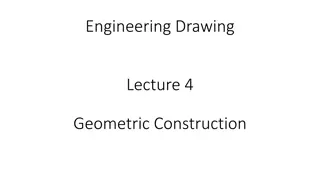Understanding Infinite Geometric Sequences and Convergent Series
Explore the concept of infinite geometric sequences in mathematics through the example of cutting a string into halves. Learn how to identify convergent series and calculate sums to infinity, distinguishing between convergent and divergent series based on the common ratio. Delve into the formula for finding the sum of an infinite number of terms in a geometric series, understanding how the sum approaches zero as the number of terms increases or when the common ratio is other than 1.
Download Presentation

Please find below an Image/Link to download the presentation.
The content on the website is provided AS IS for your information and personal use only. It may not be sold, licensed, or shared on other websites without obtaining consent from the author. Download presentation by click this link. If you encounter any issues during the download, it is possible that the publisher has removed the file from their server.
E N D
Presentation Transcript
Wednesday, 18 September 2024 The sum of infinite geometric sequences Lesson objective: Identify convergent series and calculate sums to infinity. www.mathssupport.org
Geometric Series Suppose we have a 2 metre length of string . . . 2 m . . . which we cut in half 1 m 1 m We leave one half alone and cut the 2nd in half again 1 2 m 1 2 m 1 m . . . and again cut the last piece in half 1 2 m 1 4 m 1 4 m 1 m www.mathssupport.org www.mathssupport.org
Geometric Series Continuing to cut the end piece in half, we would have in total ? +1 2+1 4+1 8+ ... 1 1 1 m 1 m m m 2 4 8 In theory, we could continue for ever, but the total length would still be 2 metres, so 1 +1 2+1 4+1 8+ ... = 2 This is an example of an infinite series. www.mathssupport.org www.mathssupport.org
Geometric Series 1 +1 2+1 4+1 The series 8+ ... = 2 r =1 is a Geometric Series with the common ratio 2. . Even though there are an infinite number of terms, this series converges to 2. 2 Sum, Sn 1 4 5 6 2 1 3 Number of terms, n www.mathssupport.org www.mathssupport.org
Sum to infinity We will find a formula for the sum of an infinite number of terms of a Geometric series. This is called the sum to infinity , S e.g. For the Geometric Series 1 +1 2+1 4+1 8+ ... = 2 we know that the sum of n terms is given by ? 1 2 u1 = 1 r=1 1 1 (1 rn) u1 (1 r) Sn= ??= 1 1 2 2 ?. As n varies, the only part that changes is 1 2 This term gets smaller as n gets larger. www.mathssupport.org www.mathssupport.org
Sum to infinity ? approaches zero. As n approachesinfinity, 1 2 We write: ? 0 1 2 As n , 0 u1 (1 rn) 1 r u1 So, for r=1 Sn= = 2, 1 r 1 For the series 1 +1 2+1 4+1 = 2 8+ ... ? = 1 1 2 So, the formula for the infinite geometric series is u1 S = 1 r n www.mathssupport.org www.mathssupport.org
Divergent series However, if, for example r = 2, rn = 2n n As n increases, also increases. In fact, 2 As n , ?? The geometric series with diverges = = r 2 There is no sum to infinity www.mathssupport.org www.mathssupport.org
Convergent Series If r is any value greater than 1, the series diverges. Also, if r 1, ( e.g.r = 2), So, again the series diverges. If r = 1, all the terms are the same. If r = 1, the terms have the same magnitude, but they alternate in sign. e.g. 2, 2, 2, 2, . . . rn as n A Geometric Series converges only if the common ratio r lies between 1 and 1. ?1 for 1 < r < 1, r ? = 1 ? This can also be written as | r | < 1 www.mathssupport.org www.mathssupport.org
Convergent Series Example 1 For the following geometric series, write down the value of the common ratio, r, and decide if the series converges. If so, find the sum to infinity. 18 + 6 + 2 + ., u1 = 18 6 18 ?1 Solution: ? = 1 ? 18 =1 r = 3 ? = 1 3 1 so r does satisfy 1 < r < 1 the series converges. S = 27 The series converges to 27 www.mathssupport.org www.mathssupport.org
Convergent Series Example 2 Use the sum of infinite series to write 0.55555... as a rational number 5 10 5 10 5 5 5 0.55555 . = + + + 10000+ 100 1000 ?1 u1 = Solution: ? = 1 ? 5 10 1 10 r = ? = 1 10 1 5 9 S = www.mathssupport.org
Convergent Series Convergent Series Example 3 For the following geometric series, write down the value of the common ratio, r, and decide if the series converges. If so, find the sum to infinity. 2 8 2 Solution: u1 = 2 1 2 2 4 1 1 1 + + + + . . . 32 = 1 so r does satisfy 1 < r < 1 the series converges. 2 1 4 r = ?1 S =8 5=1.6 ? = ? = 1 ? 1 The series converges to 1.6 www.mathssupport.org
Thank you for using resources from A close up of a cage Description automatically generated For more resources visit our website https://www.mathssupport.org If you have a special request, drop us an email info@mathssupport.org www.mathssupport.org
